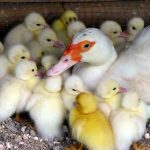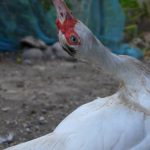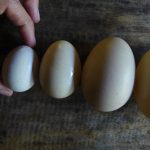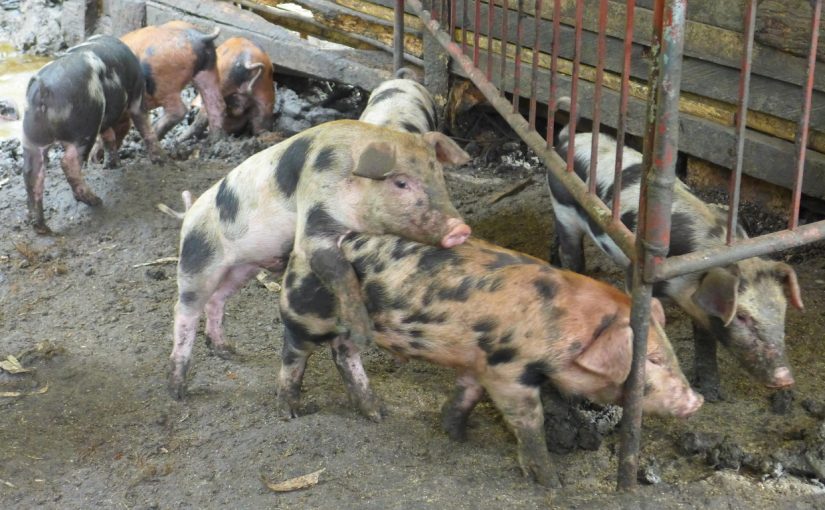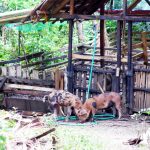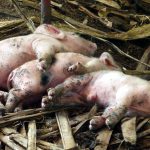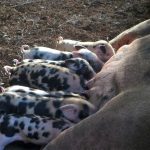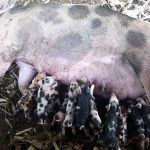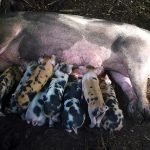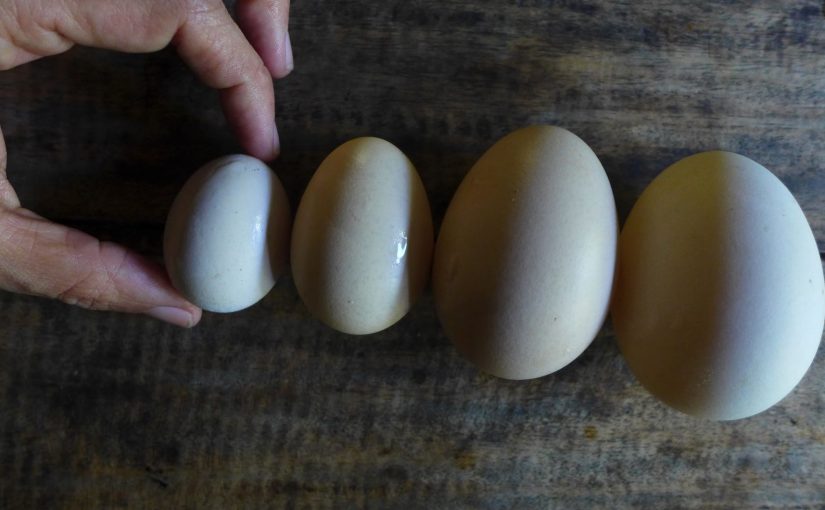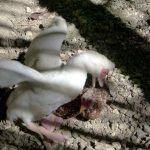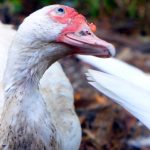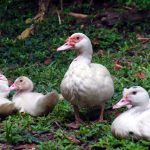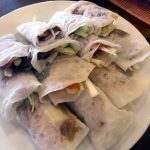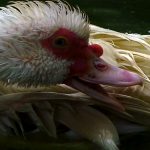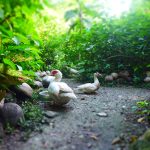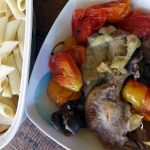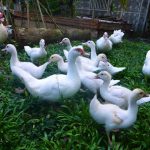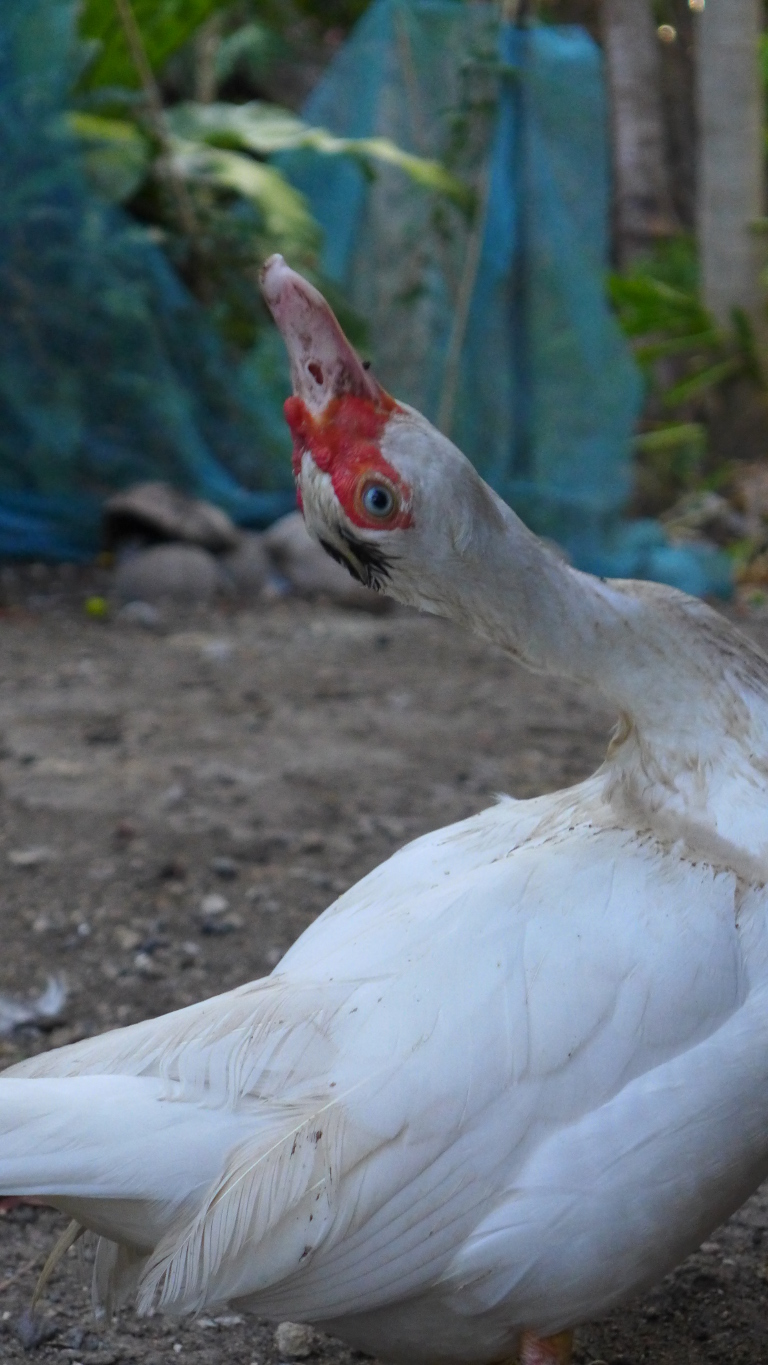When ducks gather round something, you better have a look…
Tag: video
Piglets, Finally!
Number 1 farrowed June 18 and her piglets are weaned and ready to go. These are all Bootleg’s piglets too. We’re keeping Pinky and Brownie 3, both male piglets, and the rest can go. Folks here are starting to buy piglets for fattening for Baclayon town fiesta in December. If you’re interested in buying our piglets, please come and visit us. Piglets in our village sell for PhP2,500 each.
Here’s a video of the piglets with Number 1, taken when the piglets were about 6 days old. This is Number 1’s first litter and she has proven to be a wonderful caring mother!
Here’s a video of the piglets enjoying the garden. They are about 3-4 weeks old here, learning to root and forage for the first time.
Their father, Bootleg is half-duroc, and the mother, Number 1, is a mix of Landrace and Large White. There’s probably some Pietrain or Philippine Native Pig mixed in there too. Our attempts at cross-breeding and keeping pigs in natural environment has been quite successful. These pigs are strong and hardy, able to enjoy the outdoors. They are never mutilated (no castrating, ear notching, or tail docking, etc). They are also never injected with antibiotics or supplements. I’ll post more about our pig breeding experiences later.
We hope to have piglets more next time! 🙂
We Have Duck Eggs Again!

The last clutch of duck eggs were laid in December and hatched in February. Over the next 3 months, we didn’t have any eggs. The two drakes stopped courting the duck hens — they all stopped mating. I would’ve thought that – like chickens – duck hens would continue laying eggs even without a drake, but this wasn’t the case. Just like the drought of now 4 months, the ducks expressed their own response to the dry spell.
The strange dance that some duck hens began exhibiting in January (and a couple of them continue to do so) suddenly have new meaning to me.
Then earlier this month, it started to rain, not very much, but at least, the earth gets a bit to drink! And the drake began his dance, and now, we have eggs again!
https://www.youtube.com/watch?v=uF6fIcFRKqo
With that, our alpha drake has become more aggressive with regard to enlarging his territory. Here, in the video above, he has engaged one of the roosters in a fight. The drake uses his weight to pin down the rooster and his wings to beat him, while the rooster uses his sharp beak in several attempts to inflict wounds on vulnerable areas of the drake’s body such as the eyes.
It looks like a nasty fight but neither animals really get hurt. Roosters fighting are bloodier and deadlier with their sharp beaks, claws and spurs.
Looking on are 10 young ducks (of 4 months age) that have been released a month ago from an experimental fattening program I started in early January. Note that some of the ducks have “angel wing syndrome”. This wing deformity seems to appear when young ducks are fed large amounts of protein, thus motivating a growth spur much faster than their bodies could take. This leads me to think that this breed of Muscovies should start fattening/finishing at 12 weeks of age minimum instead of 10 weeks.
Later, I’ll write more about this new fattening phase program I am implementing as I am getting very good results!
Cooking with Duck
Earlier this year, my sister treated us to a fantastic meal at a Cantonese restaurant in Quezon City. We ordered the duck, of course! Now if I remember correctly, this was a duck served 3 ways (or was it 4)? Anyway, the duck found in Chinese restaurants are usually the pekin duck and not the muscovy or barbary duck.
Both pekin and muscovy are domestic duck breeds. The pekin breed is descended from the mallard (Anas platyrhynchos) and the muscovy duck breed is descended from the muscovy (Cairina moschata).
The meat of the pekin duck is probably what most people are familiar with since it is the staple in many Chinese restaurants. This duck meat is quite fatty and moist and imparts a taste and flavour that is typically associated with “duck” flavour. The meat of the muscovy duck, however, is quite different. It is not as fatty and it has a flavour much closer to that of sirloin steak or beef.
Anyway, here are a few photos of the meal at the Chinese restaurant. Typically, the duck is baked and the meat is carefully carved. The meat is used to prepare a number of dishes (such as chopped and mixed with vegetables and spices, and eaten by wrapping in lettuce; or wrapped in rice paper with onion leeks and hoisin sauce), and the bones used to make soup. The idea is to use the whole duck to serve a fantastic meal.
Here is a fantastic video I found on The Lexicon of Food (below), showing how duck can be prepared from beak to butt! – nothing wasted. This looks more like muscovy duck meat to me! I love it totally – definitely a must try!
Happy New Year! 🙂
Ducks Mimic Eating Motions
Shortly after feeding the ducks this afternoon, I noticed this unusual behaviour amongst a couple of mature female ducks. These are mature egg-laying duck hens. They have just finished eating when they began to mimic the sweeping motions of feeding with their beaks. Here are two videos showing this peculiar behaviour. The second video shows the ducks stretching their necks, moving their heads upwards.
I assumed it was part of a mating ritual but the first video might dispute this, where there is a mature male duck (drake) nearby, drinking from a plastic basin, and inadvertently pushing one of the duck hens aside, a bit of a scuffle ensuing.
Do you know what this behaviour means?

